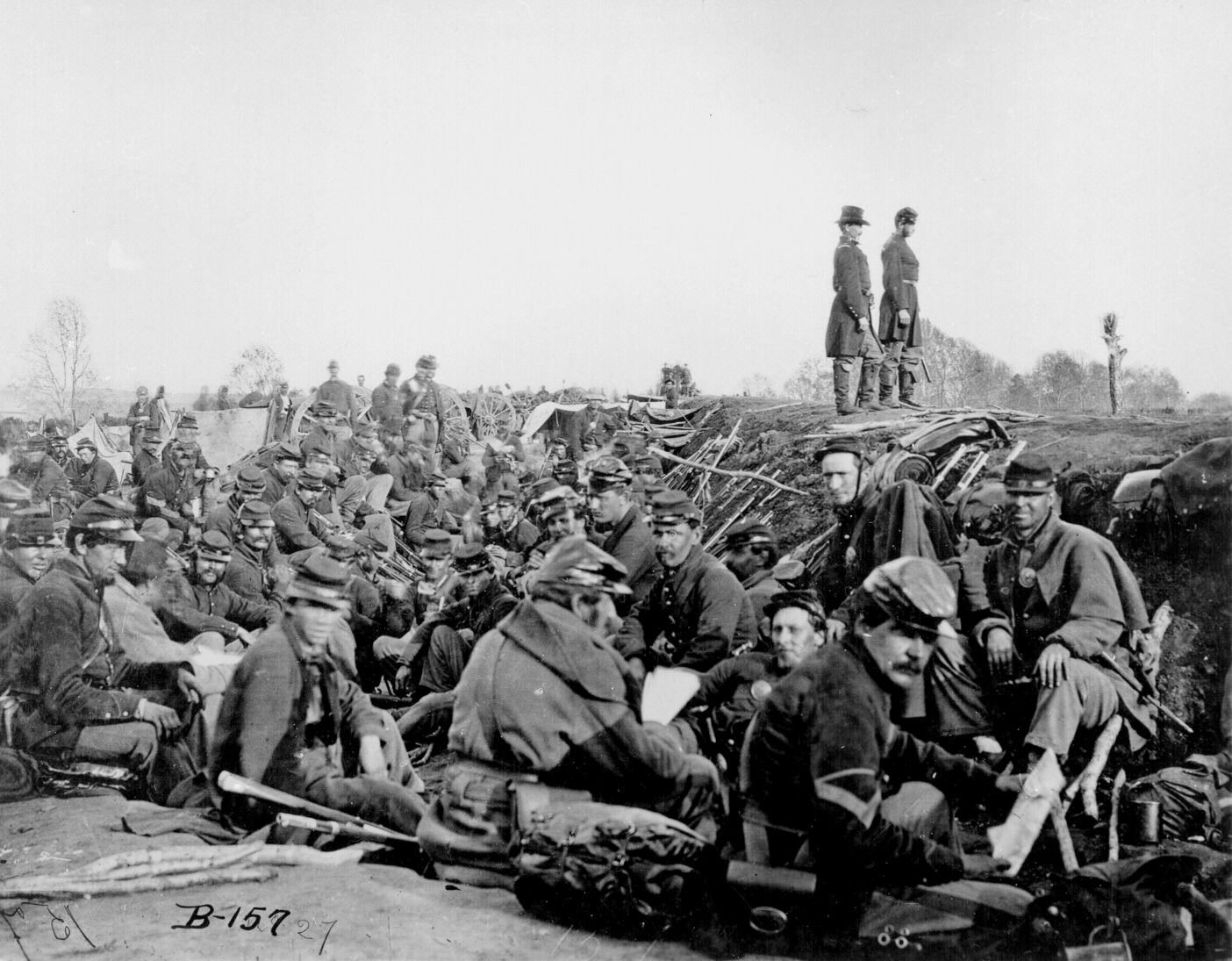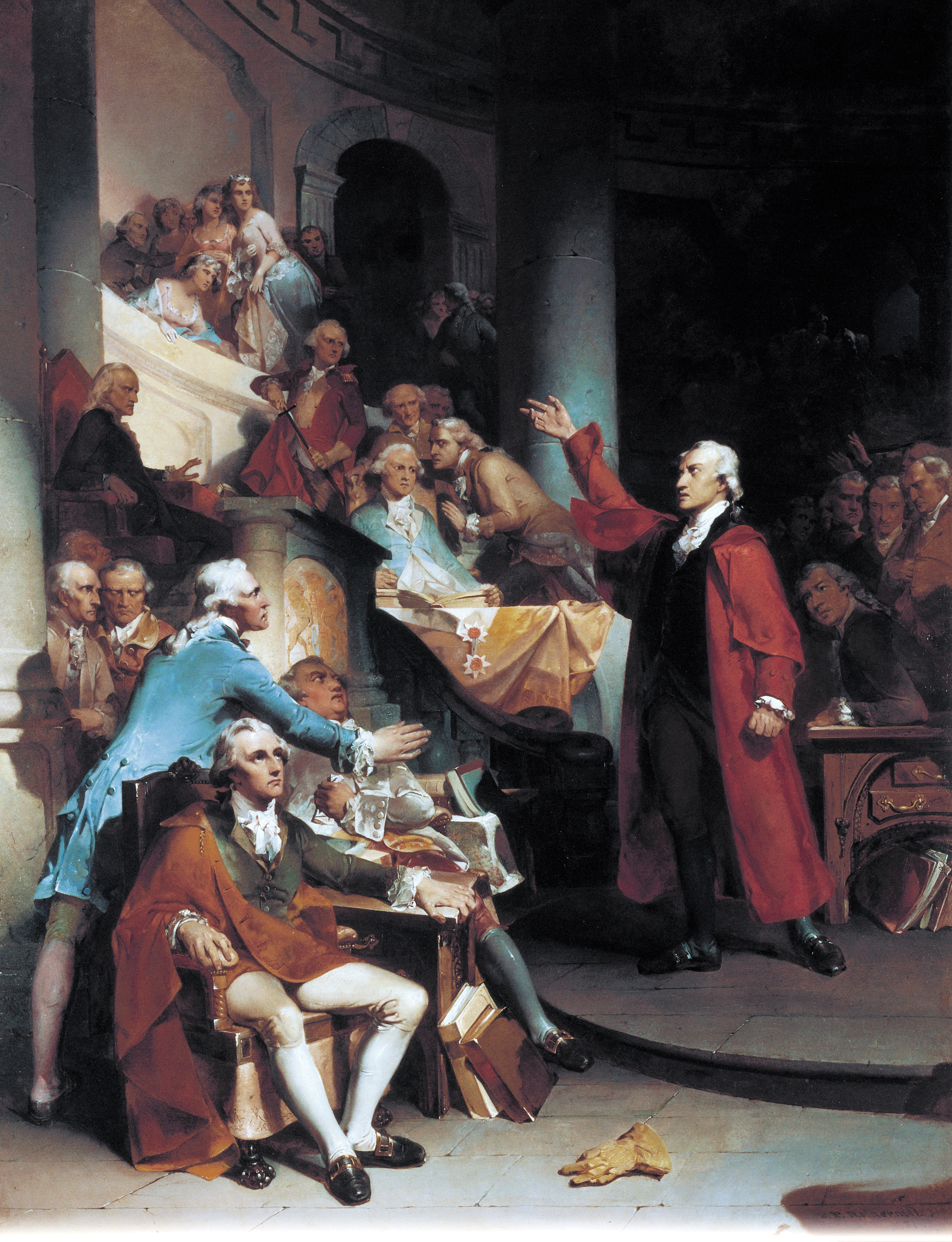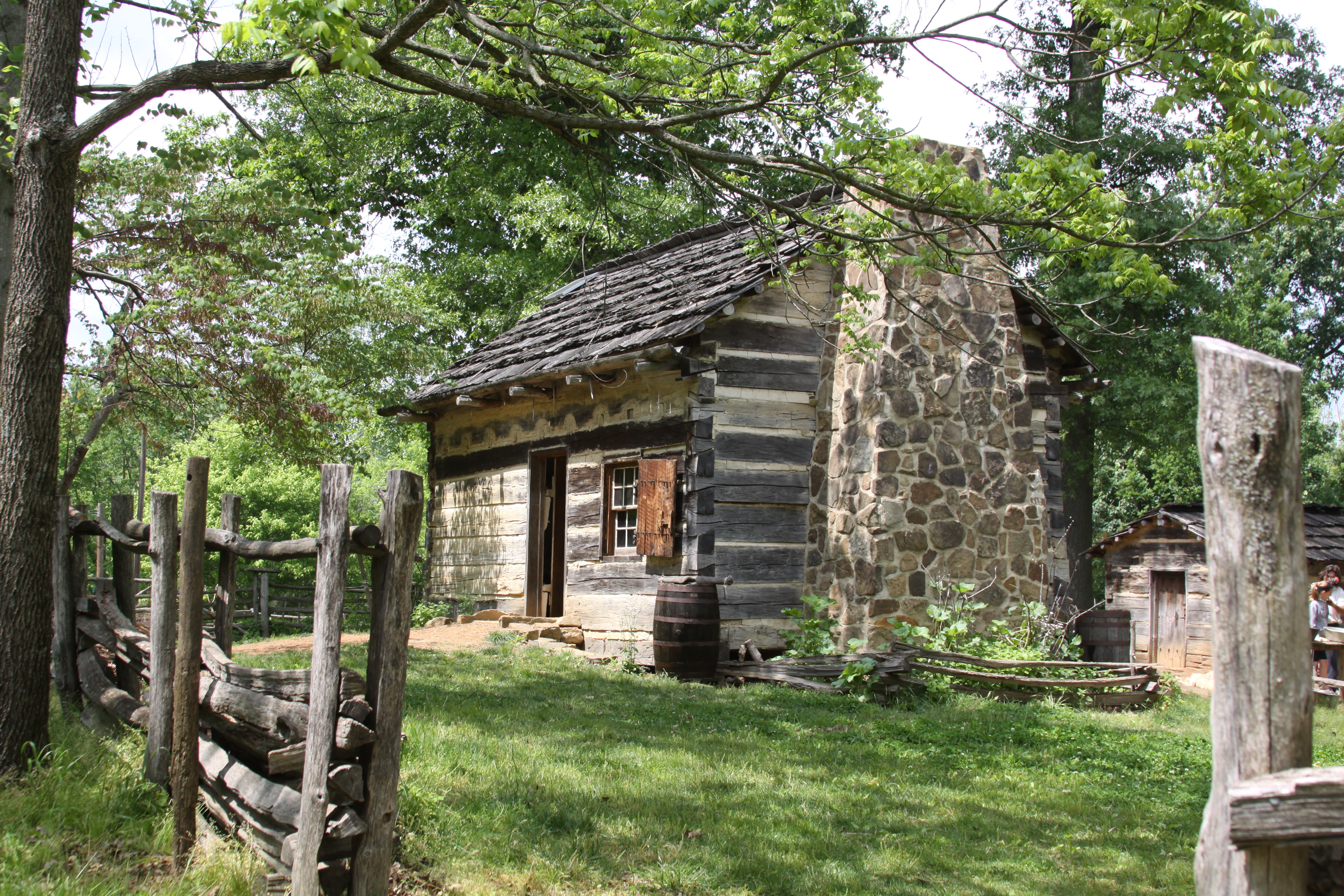|
29th Colored Regiment Monument
The 29th Colored Regiment Monument is a monument located in Criscuolo Park in New Haven, Connecticut, United States. The monument commemorates the soldiers of the 29th Connecticut Infantry Regiment (Colored) and is located on the grounds of where more than 900 black recruits trained in 1863. It was designed by Ed Hamilton, a sculptor well known for the Amistad Memorial that is also located in New Haven. History Connecticut's 29th Colored Regiment was the first all-black regiment in Connecticut and consisted of more than 900 enlisted men who volunteered to fight in the American Civil War. Recruiting began in August 1863 and the Connecticut General Assembly passed legislation for the creation of the black regiment that would have white officers. In January 1864, the 29th Regiment was filled and mustered in Fair Haven, Connecticut in March 1864. The 29th Regiment fought in the Siege of Petersburg in Petersburg, Virginia from August 12 through September 24 and took several other acti ... [...More Info...] [...Related Items...] OR: [Wikipedia] [Google] [Baidu] |
New Haven, Connecticut
New Haven is a city in the U.S. state of Connecticut. It is located on New Haven Harbor on the northern shore of Long Island Sound in New Haven County, Connecticut and is part of the New York City metropolitan area. With a population of 134,023 as determined by the 2020 United States census, 2020 U.S. census, New Haven is the third largest city in Connecticut after Bridgeport, Connecticut, Bridgeport and Stamford, Connecticut, Stamford and the principal municipality of Greater New Haven, which had a total 2020 population of 864,835. New Haven was one of the first Planned community, planned cities in the U.S. A year after its founding by English Puritans in 1638, eight streets were laid out in a four-by-four Grid plan, grid, creating the "Nine Square Plan". The central common block is New Haven Green, the New Haven Green, a square at the center of Downtown New Haven. The Green is now a National Historic Landmark, and the "Nine Square Plan" is recognized by the American Planning ... [...More Info...] [...Related Items...] OR: [Wikipedia] [Google] [Baidu] |
29th Connecticut Infantry Regiment (Colored)
The 29th Connecticut Colored Infantry Regiment was an infantry regiment that served in the Union Army during the American Civil War. It is credited as being the first infantry regiment to enter Richmond, Virginia, when the city surrendered in the Siege of Petersburg. Service The 29th Connecticut Colored Infantry Regiment was organized at Fair Haven, Connecticut and mustered on March 8, 1864, under the command of Colonel William B. Wooster. Over 1,200 volunteers were recruited, exceeding the regiments mandated strength, and 400 were used to form the 30th Connecticut Volunteer Infantry Regiment. The regiment was attached to the District of Beaufort, Department of the South, April to August 1864. 1st Brigade, 3rd Division, X Corps, Army of the James, Department of Virginia and North Carolina, to December 1864. 2nd Brigade, 3rd Division, XXV Corps, to January 1865. 2nd Brigade, 1st Division, XXV Corps, to April 1865, District of St. Marys, XXII Corps, Department of Washington, to ... [...More Info...] [...Related Items...] OR: [Wikipedia] [Google] [Baidu] |
Amistad Memorial
Amistad ("friendship" in Spanish) may refer to: Places *Amistad, New Mexico, US *Amistad, Texas, US * Amistad National Recreation Area, including the Amistad Reservoir, Texas *Amistad Reservoir, a reservoir on the Rio Grande near Del Rio, Texas * La Amistad International Park, a large International Park in Panama and Costa Rica Arts, media, and entertainment * Amistad (publishing), an imprint of HarperCollins Publishing *"Amistad", a working title for the song " You Found Me" by The Fray * ''Amistad Memorial'' (New Haven), the memorial in New Haven, Connecticut recognizing the mutiny aboard ''La Amistad'' *'' Mutiny on the Amistad: The Saga of a Slave Revolt and Its Impact on American Abolition, Law, and Diplomacy'' (1987), the historical account of the ''La Amistad'' mutiny by Howard Jones * ''Amistad'' (film), a 1997 Steven Spielberg movie based on the events of the book Law *''United States v. The Amistad'' (1841), United States Supreme Court case deciding the fate of the capt ... [...More Info...] [...Related Items...] OR: [Wikipedia] [Google] [Baidu] |
American Civil War
The American Civil War (April 12, 1861 – May 26, 1865; also known by other names) was a civil war in the United States. It was fought between the Union ("the North") and the Confederacy ("the South"), the latter formed by states that had seceded. The central cause of the war was the dispute over whether slavery would be permitted to expand into the western territories, leading to more slave states, or be prevented from doing so, which was widely believed would place slavery on a course of ultimate extinction. Decades of political controversy over slavery were brought to a head by the victory in the 1860 U.S. presidential election of Abraham Lincoln, who opposed slavery's expansion into the west. An initial seven southern slave states responded to Lincoln's victory by seceding from the United States and, in 1861, forming the Confederacy. The Confederacy seized U.S. forts and other federal assets within their borders. Led by Confederate President Jefferson ... [...More Info...] [...Related Items...] OR: [Wikipedia] [Google] [Baidu] |
Connecticut General Assembly
The Connecticut General Assembly (CGA) is the state legislature of the U.S. state of Connecticut. It is a bicameral body composed of the 151-member House of Representatives and the 36-member Senate. It meets in the state capital, Hartford. There are no term limits for either chamber. During even-numbered years, the General Assembly is in session from February to May. In odd-numbered years, when the state budget is completed, session lasts from January to June. The governor has the right to call for a special session after the end of the regular session, while the General Assembly can call for a " veto session" after the close in order to override gubernatorial vetoes. During the first half of session, the House and Senate typically meet on Wednesdays only, though by the end of the session, they meet daily due to increased workload and deadlines. History The three settlements that would become Connecticut ( Hartford, Wethersfield, and Windsor) were established in 163 ... [...More Info...] [...Related Items...] OR: [Wikipedia] [Google] [Baidu] |
Fair Haven, Connecticut
Fair Haven is a neighborhood in the eastern part of the city of New Haven, Connecticut, between the Mill and Quinnipiac rivers. The northeast section of the neighborhood is also known as Chatham Square. Fair Haven is located about two miles east of the New Haven Green comprising New Haven wards 14, 15, 16, and a portion of 8. It is bounded on the east and south by the Quinnipiac River, on the west by the Mill River, on the northwest by Amtrak railroad tracks, and on the north by I-91 (in the vicinity of Exit 7). The main through routes of the area are Grand Avenue, Blatchley Avenue, and Ferry Street. In its early days, the area was called by a succession of names including Farmes, East Farmes, The Neck, Dragon, and Clamtown. Herman Hotchkiss is credited as founder due to his investments and development. Fair Haven is not to be confused with the adjacent Fair Haven Heights neighborhood. History 17th century Prior to its founding by European settlers, Fair Haven was u ... [...More Info...] [...Related Items...] OR: [Wikipedia] [Google] [Baidu] |
Siege Of Petersburg
The Richmond–Petersburg campaign was a series of battles around Petersburg, Virginia, fought from June 9, 1864, to March 25, 1865, during the American Civil War. Although it is more popularly known as the Siege of Petersburg, it was not a classic military siege, in which a city is usually surrounded and all supply lines are cut off, nor was it strictly limited to actions against Petersburg. The campaign consisted of nine months of trench warfare in which Union forces commanded by Lt. Gen. Ulysses S. Grant assaulted Petersburg unsuccessfully and then constructed trench lines that eventually extended over from the eastern outskirts of Richmond, Virginia, to around the eastern and southern outskirts of Petersburg. Petersburg was crucial to the supply of Confederate Gen. Robert E. Lee's army and the Confederate capital of Richmond. Numerous raids were conducted and battles fought in attempts to cut off the Richmond and Petersburg Railroad. Many of these battles caused the ... [...More Info...] [...Related Items...] OR: [Wikipedia] [Google] [Baidu] |
Petersburg, Virginia
Petersburg is an independent city in the Commonwealth of Virginia in the United States. As of the 2020 census, the population was 33,458. The Bureau of Economic Analysis combines Petersburg (along with the city of Colonial Heights) with Dinwiddie County for statistical purposes. The city is south of the commonwealth (state) capital city of Richmond. It is located at the fall line (the head of navigation of rivers on the U.S. East Coast) of the Appomattox River (a tributary of the longer larger James River which flows east to meet the southern mouth of the Chesapeake Bay at the Hampton Roads harbor and the Atlantic Ocean). In 1645, the Virginia House of Burgesses ordered Fort Henry built, which attracted both traders and settlers to the area. The Town of Petersburg, chartered by the Virginia legislature in 1784, incorporated three early settlements, and in 1850 the legislature elevated it to city status. Petersburg grew as a transportation hub and also developed indust ... [...More Info...] [...Related Items...] OR: [Wikipedia] [Google] [Baidu] |
Richmond, Virginia
(Thus do we reach the stars) , image_map = , mapsize = 250 px , map_caption = Location within Virginia , pushpin_map = Virginia#USA , pushpin_label = Richmond , pushpin_map_caption = Location within Virginia##Location within the contiguous United States , pushpin_relief = yes , coordinates = , subdivision_type = Country , subdivision_name = , subdivision_type1 = State , subdivision_name1 = , established_date = 1742 , , named_for = Richmond, United Kingdom , government_type = , leader_title = Mayor , leader_name = Levar Stoney ( D) , total_type = City , area_magnitude = 1 E8 , area_total_sq_mi = 62.57 , area_land_sq_mi = 59.92 , area_water_sq_mi = 2.65 , elevation_m = 50.7 , elevation_ft = 166.45 ... [...More Info...] [...Related Items...] OR: [Wikipedia] [Google] [Baidu] |
Abraham Lincoln
Abraham Lincoln ( ; February 12, 1809 – April 15, 1865) was an American lawyer, politician, and statesman who served as the 16th president of the United States from 1861 until his assassination in 1865. Lincoln led the nation through the American Civil War and succeeded in preserving the Union, abolishing slavery, bolstering the federal government, and modernizing the U.S. economy. Lincoln was born into poverty in a log cabin in Kentucky and was raised on the frontier, primarily in Indiana. He was self-educated and became a lawyer, Whig Party leader, Illinois state legislator, and U.S. Congressman from Illinois. In 1849, he returned to his successful law practice in central Illinois. In 1854, he was angered by the Kansas–Nebraska Act, which opened the territories to slavery, and he re-entered politics. He soon became a leader of the new Republican Party. He reached a national audience in the 1858 Senate campaign debates against Stephen A. Douglas. L ... [...More Info...] [...Related Items...] OR: [Wikipedia] [Google] [Baidu] |
African-American Military Monuments And Memorials
African Americans (also referred to as Black Americans and Afro-Americans) are an ethnic group consisting of Americans with partial or total ancestry from sub-Saharan Africa. The term "African American" generally denotes descendants of enslaved Africans who are from the United States. While some Black immigrants or their children may also come to identify as African-American, the majority of first generation immigrants do not, preferring to identify with their nation of origin. African Americans constitute the second largest racial group in the U.S. after White Americans, as well as the third largest ethnic group after Hispanic and Latino Americans. Most African Americans are descendants of enslaved people within the boundaries of the present United States. On average, African Americans are of West/Central African with some European descent; some also have Native American and other ancestry. According to U.S. Census Bureau data, African immigrants generally do not self-id ... [...More Info...] [...Related Items...] OR: [Wikipedia] [Google] [Baidu] |
Buildings And Structures In New Haven, Connecticut
A building, or edifice, is an enclosed structure with a roof and walls standing more or less permanently in one place, such as a house or factory (although there's also portable buildings). Buildings come in a variety of sizes, shapes, and functions, and have been adapted throughout history for a wide number of factors, from building materials available, to weather conditions, land prices, ground conditions, specific uses, prestige, and aesthetic reasons. To better understand the term ''building'' compare the list of nonbuilding structures. Buildings serve several societal needs – primarily as shelter from weather, security, living space, privacy, to store belongings, and to comfortably live and work. A building as a shelter represents a physical division of the human habitat (a place of comfort and safety) and the ''outside'' (a place that at times may be harsh and harmful). Ever since the first cave paintings, buildings have also become objects or canvasses of much artist ... [...More Info...] [...Related Items...] OR: [Wikipedia] [Google] [Baidu] |






